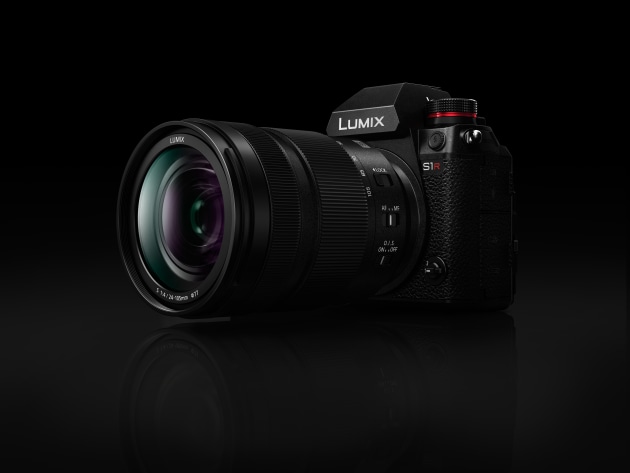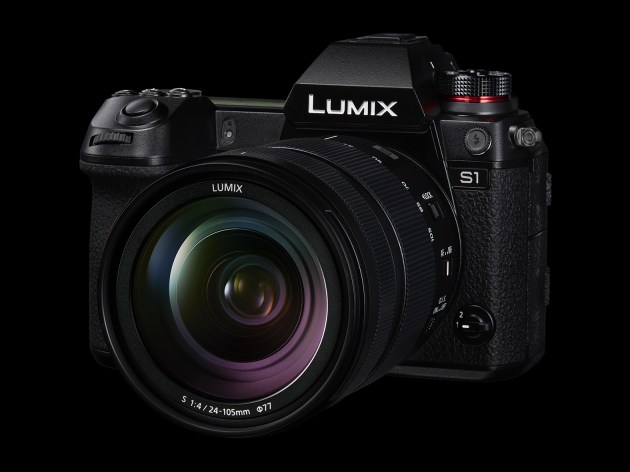Panasonic's new S1R can shoot at 187-megapixels in high res mode
Following Panasonic's development announcement at Photokina 2018, the Japanese-company has revealed the full specs of its upcoming LUMIX S1R and S1 cameras.
Standout features of the new full-frame cameras include a 187-megapixel high res mode in the S1R, six-stop IBIS, solid 4K video features and weather-sealed bodies.

The full-frame sensor
The LUMIX S1R and S1 feature newly-developed 35mm format sensors, at 47.3-megapixels and 24.2-megapixels, respectively, with an AR coating promising to minimise ghosting and flare.
Both cameras feature 5-axis internal stabilisation, and, with the optical image stabilisation in selected lenses, can support up to 6 stops of image stabilisation in total.
The S1R has a native ISO of 25600 (extendable to 51200) and the S1 has a native ISO of 51200 (extendable to 204800).
Build
Bodies are weather-sealed, with magnesium alloy frames that are splash-resistant, dust-resistant and freeze-resistant down to -10 degrees Celsius. There's an 8-directional joystick and illuminated buttons to increase visibility in low-light situations.
There are two high-speed memory card slots, one supporting UHS-II SD cards and the other supporting XQD (upgradeable to CF express in the near future).

Autofocus
Both cameras feature a contrast detect autofocus system promising focus acquisition in as little as 0.08 seconds. High speed burst shooting is available at 9 fps (AFS) or 6 fps (AFC).
There's also 6K Photo, recording a burst of 18-megapixel still images continuously at 30 fps, and 4K Photo, capturing 60 fps in 8-megapixel resolution.
Panasonic’s face/eye detection technology is included, with the Eye AF capability detecting the pupil of the eye and holding focus.
Finally the S series also incorporate AI Technology that detects specific subjects, both humans and fast-moving animals. The camera keeps tracking these subjects even when they are not facing the camera.
Features
Both the S1R and S1 will also offer High Resolution Mode, with the S1R capable ot taking images at a whopping 187-megapixels (16,736 x 11,168-pixels) while the S1 captures 96-megapixel equivalent (12,000 x 8,000-pixels). The mode captures and combines eight consecutive images in-camera.
Panasonic has also introduced the innovative Hybrid Log Gamma (HLG) Photo Mode, which produces high dynamic range (HDR) images in HSPi format for playback on HDR TVs.
Video
The cameras record 4K at 60p/50p (PAL), and Full HD (at a maximum 180 fps /150 fps). Both models are compatible with an XLR microphone adaptor enabling professional audio equipment to be used.
The LUMIX S1 has a full sensor readout, capturing 4K 30p/25p/24p with no recording time limit.
Furthermore, the S1, via a software upgrade available later in 2019 (to be sold separately), will support 4:2:2 10-bit 4K 30p/25p internal video recording and 4K 60p/50p via HDMI output as well as the V-Log picture profile.
Pricing and availability
LUMIX S1
DC-S1GN-K - Body only: RRP $3599
DC-S1MKIT- Kit with LUMIX S 24-105mm F4 MACRO O.I.S. (S-R24105): RRP $5199
LUMIX S1R
DC-S1RGN-K - Body only: RRP $5299
DC-S1RMKIT- Kit with LUMIX S 24-105mm F4 MACRO O.I.S. (S-R24105): RRP $6899
The LUMIX S1R/S1 will be available in Australia in April 2019. For further information, visit www.panasonic.com.au

